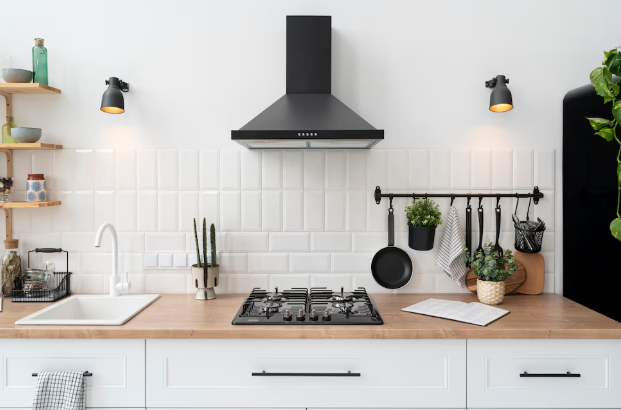Non-Toxic Air Fryers: A Health-Conscious Choice for Modern Kitchens

In recent years, air fryers have become one of the most popular kitchen appliances for those seeking healthier cooking methods. While the ability to prepare crispy foods with minimal oil is a major draw, there is growing concern about the materials used in some air fryer models. This has led many health-conscious consumers to seek out non-toxic air fryers — appliances made without harmful chemicals or materials that can leach into food. Understanding what makes an air fryer non-toxic, why it matters, and how to choose the right model is essential for anyone committed to safe and healthy cooking.
What Is a Non-Toxic Air Fryer?
A non-toxic air fryer is designed without materials or coatings that can release toxic substances when exposed to high heat. Traditional air fryers often contain components made from plastic, Teflon (PTFE), or PFOA (perfluorooctanoic acid), which may degrade and emit harmful fumes over time. In contrast, non-toxic air fryers are typically made from stainless steel, ceramic, glass, or BPA-free materials that remain stable and safe during use.
Key features of non-toxic air fryers include:
-
PTFE- and PFOA-free non-stick coatings
-
BPA-free plastics or minimal plastic use
-
Stainless steel or ceramic cooking baskets and trays
-
Glass or metal exteriors that resist chemical leaching
Why Non-Toxic Materials Matter
The concern over toxins in air fryers stems primarily from the use of Teflon and similar substances. PTFE, commonly used for non-stick surfaces, begins to degrade at temperatures above 500°F (260°C), releasing fumes that can cause flu-like symptoms in humans (known as “Teflon flu”) and can be deadly to birds. PFOA, previously used in Teflon production, has been linked to cancer, thyroid disorders, and other health issues, though it is now largely phased out in the U.S.
Even if these substances do not immediately affect the user, repeated exposure to low levels of toxins may contribute to long-term health problems. For families with children, pets, or individuals with chemical sensitivities, investing in a non-toxic air fryer can help reduce daily exposure to harmful substances.
Materials Used in Non-Toxic Air Fryers
To ensure safety, non-toxic air fryers use alternative materials that provide durability and functionality without the risks associated with chemical coatings.
-
Stainless Steel: Durable, rust-resistant, and non-reactive, stainless steel is a top choice for air fryer interiors and baskets. It’s easy to clean and doesn’t emit harmful fumes at high temperatures.
-
Ceramic: Often used for non-stick coatings, ceramic is a natural material made from clay and is free of PTFE and PFOA. It provides good heat distribution and is generally considered safe.
-
Glass: Some air fryers incorporate glass bowls or lids, which are inert and do not leach chemicals. However, glass can be fragile and is usually found in combination with metal components.
-
BPA-Free Plastics: When plastic is used in parts of the air fryer such as handles or outer shells, BPA-free variants reduce the risk of hormone-disrupting chemicals leaching into food.
Benefits of Using a Non-Toxic Air Fryer
Beyond the obvious health benefits, non-toxic air fryers offer several practical and environmental advantages:
-
Peace of Mind: Users can cook without worrying about inhaling fumes or ingesting toxins.
-
Sustainability: Many non-toxic air fryers are built with longer-lasting, recyclable materials.
-
Better Flavor: Food cooked in ceramic or stainless steel often retains a more natural taste compared to food prepared in chemically coated surfaces.
-
Easy Maintenance: Non-toxic materials like stainless steel and ceramic are easy to clean and resistant to scratches or stains.
Tips for Choosing a Non-Toxic Air Fryer
If you’re looking to invest in a non-toxic air fryer, here are some important tips:
-
Check Materials: Look for air fryers labeled as PTFE- and PFOA-free. Examine whether the interior and basket are made from stainless steel or ceramic.
-
Read Reviews: Customer feedback can reveal if a product performs well and if there are any concerns with the materials used.
-
Brand Transparency: Trustworthy brands clearly disclose the materials used in their products and often highlight certifications for safety.
-
Temperature Controls: A good air fryer should not exceed temperatures where toxic materials may degrade, even if they were present.
-
Consider Size and Functionality: Choose an air fryer that fits your cooking needs without compromising on safety.
Final Thoughts
A non-toxic air fryer is a worthwhile investment for those who value health, safety, and sustainability in their kitchen. By avoiding harmful chemicals and opting for safer materials, these appliances allow for guilt-free indulgence in your favorite crispy foods. Whether you’re preparing vegetables, meats, or desserts, a non-toxic air fryer offers the convenience of modern cooking without the risks associated with traditional non-stick technologies. As awareness grows, the demand for non-toxic appliances is likely to shape the future of kitchen innovation.







